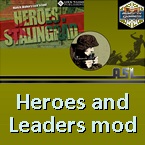asl3d
Posts: 6531
Joined: 2/6/2017
Status: offline

|
US Douglas SBD Dauntless
The Douglas SBD Dauntless was a dive bomber that was manufactured by Douglas Aircraft, which first entered service in mid-1939. Ed Heinemann led a team of designers who considered a development with a 1,000 hp (750 kW) Wright Cyclone engine. Their relatively heavy gun armament with two forward-firing 12.7 mm M2 Browning machine guns and either one or two rear flexible-mount 7.62 mm AN/M2 machine guns was effective against the lightly built Japanese fighters, and many pilots and gunners took aggressive attitudes to the fighters that attacked them.
Was the United States Navy's main carrier-based dive bomber and the SBD was also flown by the United States Marine Corps, both from land air bases and aircraft carriers. The plane was developed at the Douglas CA plant, and that facility, along with the company's Oklahoma City plant, built almost all the SBDs produced. One year earlier, both the U.S. Navy and Marine Corps had placed orders for the new dive bomber, designated the SBD-1 and SBD-2 (the latter had increased fuel capacity and different armament). The SBD-1 went to the Marine Corps in late 1940, and the SBD-2 to the Navy in early 1941. The next version was the SBD-3, which began manufacture in early 1941. It had increased armor, self-sealing fuel tanks, and four machine guns. The SBD-4 provided a 12-volt (up from 6-volt) electrical system, and a few were converted into SBD-4P reconnaissance aircraft. A total of 5,936 SBDs were produced during the War. The last SBD rolled off the assembly lines at the Douglas Aircraft plant in El Segundo, California, on 21 July 1944.
It possessed long range, good handling characteristics, maneuverability, potent bomb load, great diving characteristics from the perforated dive brakes, good defensive armament, and ruggedness. One land-based variant of the SBD – omitting the arrestor hook — was purpose-built for the U.S. Army Air Forces.
Most U.S. Navy SBDs flew from their aircraft carriers, which did not operate in close cooperation with the rest of the fleet. The first major use of the SBD in combat was at the Battle of the Coral Sea. In February–March 1942, SBDs from the carriers USS Lexington, USS Yorktown, and USS Enterprise, took part in various raids on Japanese installations in the Gilbert Islands, the Marshall Islands, New Guinea, Rabaul, Wake Island, and Marcus Island.
SBDs played a major role in the Guadalcanal Campaign, operating off both American carriers and from Henderson Field on Guadalcanal. SBDs proved lethal to Japanese shipping that failed to clear New Georgia Sound (the slot) by daylight. Losses inflicted included the carrier Ryūjō, sunk near the Solomon Islands on 24 August. Three other Japanese carriers were damaged during the six-month campaign. SBDs sank a cruiser and nine transports during the Naval Battle of Guadalcanal.
In the Atlantic Ocean the SBD saw action during Operation Torch, the Allied landings in North Africa in November 1942. The SBDs flew from USS Ranger and two escort carriers. Eleven months later, during Operation Leader, the SBDs saw their European debut when aircraft from Ranger attacked Nazi German shipping around Bodo, Norway.

 Attachment (1) Attachment (1)
_____________________________
Semper fidelis
|
 Printable Version
Printable Version





































 New Messages
New Messages No New Messages
No New Messages Hot Topic w/ New Messages
Hot Topic w/ New Messages Hot Topic w/o New Messages
Hot Topic w/o New Messages Locked w/ New Messages
Locked w/ New Messages Locked w/o New Messages
Locked w/o New Messages Post New Thread
Post New Thread